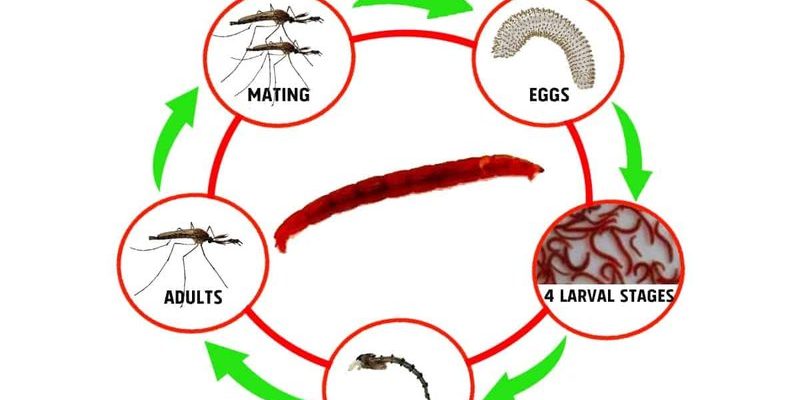
So, grab your favorite drink, and let’s chat about bloodworm reproduction in a way that’s both engaging and informative. You might be surprised at just how intricate this process is and why it matters. Whether you’re a casual fish keeper or a budding biologist, there’s something here for everyone!
Understanding Bloodworms: A Quick Overview
Before we get into reproduction, let’s quickly cover what bloodworms actually are. Just to clarify, bloodworms are the larvae of midge flies, often found in muddy or marshy environments. Think of them as the awkward teenagers of the aquatic world, undergoing some serious transformation before they turn into adult flies. They thrive in low-oxygen environments and are known for their striking red color, which comes from the hemoglobin in their blood.
This vibrant color isn’t just for show; it serves a purpose too. The hemoglobin helps them absorb oxygen from their surroundings, making them well-suited for life in murky waters. By now, you might be wondering how these little guys find love and start the next generation.
The Mating Rituals of Bloodworms
Bloodworms have some unique courtship behaviors that set the stage for reproduction. When it’s time to mate, male bloodworms engage in a fascinating dance. They release pheromones, which are like love potions, to attract females. Imagine a tiny underwater disco where the males show off their best moves to catch a female’s eye!
Once a female is attracted, mating occurs. The male wraps his body around the female, and they join together, forming a sort of biological bridge. It looks a bit like a wrestling match, but it’s actually a display of attraction and compatibility. This dance can last a while, ensuring that both partners are ready to contribute to the next generation.
Egg-Laying: A Vital Step in Bloodworm Reproduction
After their passionate mating session, female bloodworms are ready to lay eggs. This step is crucial, as the health of the eggs will determine the survival of the larvae. Females can lay thousands of eggs at once, often in clusters that resemble jelly-like masses. These eggs are usually deposited in shallow water, where they have a better chance of developing successfully.
Here’s the thing: the conditions where the eggs are laid are essential. If the water is too warm, too cold, or not oxygen-rich enough, the eggs might not survive. Think of this stage like a chef making a delicate dish—getting the timing and temperature just right is critical for a successful outcome.
The Journey from Eggs to Larvae
Once the eggs are laid, it’s a waiting game. Under ideal conditions, the eggs will hatch in about a week. The tiny larvae that emerge are called “bloodworms,” and they’re not quite the wriggly creatures you might expect. In fact, they start off quite small and look a bit like wriggling threads in the water.
As they grow, bloodworms go through several developmental stages, known as instars. Each stage involves molting, where the larvae shed their skin to accommodate their growing bodies. This process is essential for their development and survival, allowing them to thrive in various aquatic environments, from freshwater to brackish water.
Life as a Larvae: Growth and Development
Once hatched, bloodworm larvae are on the fast track to growth. They feed on organic material in the water, which helps them gain energy and strength. It’s like they’re devouring every piece of food they can find to prepare for the transformation ahead. During this stage, they grow quickly—typically reaching full size within a few weeks.
You might be curious about their role in the ecosystem at this point. Bloodworm larvae are a vital food source for many aquatic animals, including fish and birds. This means their growth isn’t just about survival; it’s also about becoming a part of the food web. It’s a circle of life kind of deal, where each creature plays a role in sustaining the ecosystem.
Importance of Bloodworm Reproduction in Aquatic Ecosystems
So, why should we care about bloodworm reproduction? Truthfully, understanding this process helps us appreciate the intricate web of life in our freshwater and marine environments. Bloodworms are like the unsung heroes of the ecosystem, playing a crucial role in nutrient cycling and serving as a food source for many creatures.
Additionally, bloodworms are often used in aquaculture and fish farming, making them significant from an economic perspective. By knowing how they reproduce and grow, breeders can optimize their conditions to produce healthy bloodworms for fishing bait or aquarium use.
Final Thoughts: The Fascinating Life Cycle of Bloodworms
Bloodworm reproduction is a remarkable process that showcases the wonders of nature. From their intricate mating dances to their rapid growth as larvae, bloodworms play a vital role in aquatic ecosystems. They might seem small and simple, but their life cycle is complex and essential for maintaining biodiversity in our waters.
Whether you’re a hobbyist or just curious about the natural world, delving into bloodworm reproduction reveals how interconnected all life is. It’s a reminder that even the smallest creatures have significant roles to play in the greater story of life on Earth. So, next time you see a bloodworm, take a moment to appreciate its journey and the wonders it contributes to our ecosystems.

